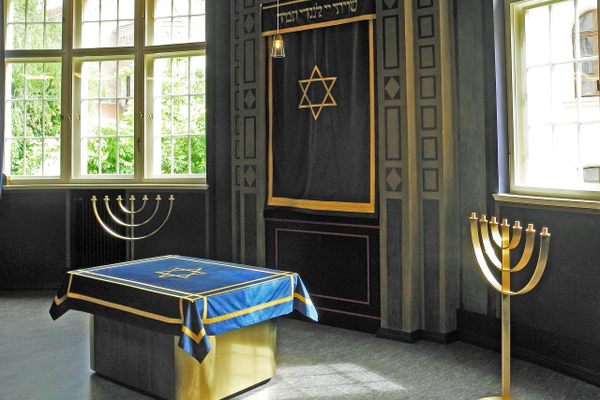Sant Pau Recinte Modernista
The largest Art Nouveau complex in the world is a Barcelona hospital with a 600-year-long history.
Stained glass windows, arches, paintings, and mosaics illuminated by massive windows that offer natural light in buildings surrounded by impeccable landscaping and ornate statues of gargoyles and angels aren’t often indicative of hospital aesthetics. But Sant Pau in Barcelona, with a history that dates back six centuries, is a worthwhile detour from traditional medical architecture.
In the late 19th century, Barcelona was expanding beyond its old city walls, and beyond the Hospital de la Santa Creuwhich had served the city since the early 1400s. In 1896 a wealthy Catalan banker named Pau Gil i Serra died, leaving behind a will that requested his estate be used for a new hospital that would utilize the newest available medical technology.
A spot was chosen about two miles northeast from the old medieval hospital, which now houses the National Library of Catalonia. Catalan architect Lluís Domènech i Montaner designed the site, which would represent the merging of six of Barcelona’s hospitals.
Domènech was an influential artist in Catalan Modernisme and Art Nouveau. He designed the 27-building complex that took up the equivalent of around nine city blocks to be interconnected by underground tunnels. Sixteen of the structures were built in the Modernist style and, though guidebooks and tourists often overlook the site, make up the largest Art Nouveau site in the world.
The complex was finished in 1930, with each building representing a different medical specialty. The Hospital de Sant Pau was fully functioning until 2009, when a new building, erected in the northern half of the complex, took over the duties. Several of the historic buildings were refurbished over the next several years.
The site, designated as a UNESCO World Heritage Site in 1997, reopened to the public in 2014 and now serves as spaces for events, meetings, and tours of the Art Nouveau style. To this day it continues to serve its original purpose while representing an important point of reference in world architecture.
























































Follow us on Twitter to get the latest on the world's hidden wonders.
Like us on Facebook to get the latest on the world's hidden wonders.
Follow us on Twitter Like us on Facebook